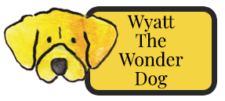How to calm an angry child
How to calm an angry child
Have you ever been faced with calming an angry child?
What is the best approach?
How can we teach children to manage strong emotions like anger?
Brain Chemistry
Anger control is best understood by thinking about the brain chemistry involved. Adults and children often think of emotions such as anger as something that just “happens” to them. In actuality, we all have a great deal of control over our feelings. Understanding how the brain works is important.
Here’s a visual to help…
Close your hand in a fist with the thumb hidden by the other four fingers. The fist represents the brain and the wrist and and forearm are the spinal cord.
The thumb represents the midbrain where emotions and memories are created and processed.
The back of the hand and the fingernails represent the cerebral cortex. It controls logical thinking and causes us to act with kindness and empathy. Our reasoning and problem solving abilities reside here.
Communication travels from one section of the brain to another section.
Brain Chemistry and Anger
What happens when someone loses control of their emotions?
A good way to illustrate this is by suddenly opening up the fingers, leaving the thumb still crossed in the palm of the hand. We might say this represents a time when someone has lost control.
Notice how far away the logical part of the brain (the part represented by the fingernails) is now from the emotions in the thumb? Of course our brain doesn’t actually shift but our thinking does.
Our thinking becomes inflammatory. We might think, “This is the worst day of my life!!! Wally, the meanest boy in the world, has embarrassed me and I’ll never live it down.” Irrational thinking usually involves catastrophic thinking with lots of absolutes and exaggerations such as: “always”, “never”, “worst day of my life”, “I’ll never”.
The First Step to Regaining Control: Belly Breathing
The first step in regaining control and getting the emotional part of the brain back in touch with the rational thinking part is to practice some controlled breathing.
Breathing can help a child become calm enough to engage in some therapeutic talk that can change irrational thinking to rational thinking. Focusing on breathing first is a great way to refocus both our physical and our mental bodies.
The Second Step: Changing Irrational Thinking
Once calm, the next step is to challenge the irrational thinking and replace it with rational problem solving thinking.
What really happened?
Is there a different perspective that would help understand or solve the problem?
What needs to happen next to resolve the issue?
These are some of the questions that can be asked in order to turn an angry situation into a calmer interaction. It’s also important to rephrase or restate the situation in a way that is reasonable but more manageable and not so inflammatory. For instance, ” Wally said something mean that hurt my feelings. Just because he said it, doesn’t mean that it is true or that I need to pay attention to it.” Use a scale labelled from one-ten and ask the child where on the scale her feelings would be. Is that a reasonable response given the situation? Might the situation be assigned a different number and a different reaction?
The Third Step: Make a Plan
It’s always good to learn from past experience and I usually end by encouraging the child to make a plan for the future.
What if Wally continues to say mean things? What are the options? What can the child do or say? For instance, ” Wally said something mean that hurt my feelings. If he does that again, I will let him know that I don’t like him saying that.”
We often think of emotions as something that happens that is out of our control. In actuality, we have a lot of control over our emotions if we can learn to breathe, calm down our bodies and engage our rational thinking.
Wyatt Learns about Cooperation

Wyatt wants to play Frisbee. Max wants to build a fort and Callie wants to have a tea party. How do the three friends reconcile their differences? Can it be done? When Wyatt doesn’t get his way, Max’s mother suggests he be the Superhero for the day. Join Wyatt as he learns how the magic of cooperation and compromise can bring the five friends closer together.
Feeling left out? Need help getting along with friends? Wyatt the Wonder Dog books weave important life skills into engaging story telling. Join Wyatt as he learns how to be the superhero in his group of friends by using cooperation and compromise.
~MaryFrances Gonzalez MACCC-SLP
Wyatt’s Little Book of Lesson Plans, Worksheets and Games
Just for you! Here are activities, lesson plans, discussion questions, coloring sheets, word search puzzles and games for each of the nine Wyatt the Wonder Dog Books. Over 75 pages of ideas so that you can create social emotional learning lessons on cooperation, teamwork, and leadership skills and more to quickly extend and incorporate the Wyatt stories.
Just for you! Here are activities, lesson plans, discussion questions, coloring sheets, word search puzzles and games for each of the nine Wyatt the Wonder Dog Books. Over 75 pages of ideas so that you can create social emotional learning lessons on cooperation, teamwork, and leadership skills and more to quickly extend and incorporate the Wyatt stories.

[…] 3 Steps to Managing Anger in Children […]